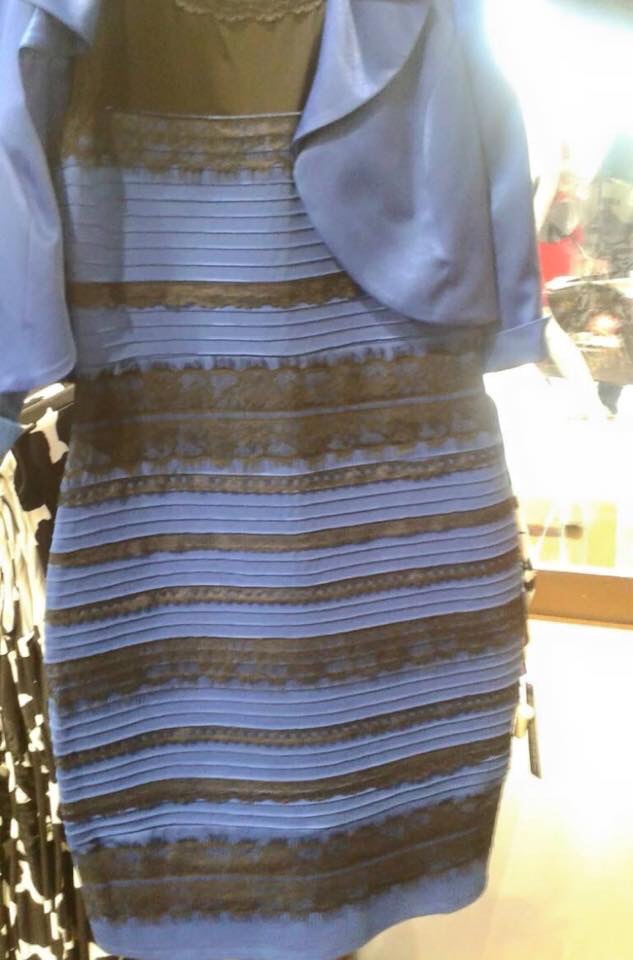By Andie Alexander
Andie Alexander earned her B.A. in Religious Studies and History in 2012. She is now working on her M.A. in Religious Studies at CU Boulder. Andie also works as the online Curator for the Culture on the Edge blog.
Last night, as I was gearing up for TGIT, my friend texted me a link to this Buzzfeed article that started going viral. The article featured a photo of a dress (pictured above), that in particular lighting and with a particular perspective, can be viewed as either blue and black or white and gold, or some variation thereon. It’s all over social media, with people posting their opinion versus their friend’s, etc., etc. The original post appeared on Tumblr, and as such, has some amusing comments, namely calling on NASA to resolve the issue.
But the big question of the night: Is the dress blue and black or white and gold?
Buzzfeed even added a poll to the post for each viewer to answer. Now celebrities are posting their definitive decision, as are websites who are doing color-match with Photoshop to prove the actual colors of the dress, including a follow-up Buzzfeed article. The amount of circulation this post has gotten is pretty intriguing. I’ve seen a number of posts with people initially saying, “It’s white and gold!” only to follow up a few minutes later saying, “Now it’s blue and black!”
What strikes me as interesting, though, is not what the colors actually are, but rather the amount of time and effort that has gone into classifying this dress as blue/black or white/gold. Despite all of the work to prove the authentic colors of the dress, the question still remains. That says to me, that it’s really not about the answer at all. It’s about the question. That’s what drives the discourse. Each attempt to define the colors of the dress is just another attempt at classification — or discourse on it. Regardless of what the colors may actually be, everyone has their own perspective — one that’s affected by lighting, angle, etc. The only reason it remains interesting is because it’s not really about the color, but rather how it’s classified by each viewer, for that is where the work really happens.
It reminds me of Steven Ramey’s recent post on strategic labeling with regard to how ISIS is classified — religious or not, Islamic or not, terrorist or not, etc. Ramey argues that our attempts to label anything are often rooted in biases and perspectives that attempt to promote a very particular agenda — i.e., labels aren’t neutral descriptors, but rather are very strategic. While the color of a dress may not carry the same weight as how one classifies ISIS — that’s another post all together — I think it serves well to show how arbitrary classifications really are. Our labels aren’t necessarily based on the “true nature” of something, but instead based on one’s perspective of it. Sure, there’s no real agenda behind labeling this dress as blue or white, but if we can begin to understand that it’s not about the dress but about those doing the labeling, we can approach the issue in a completely different way. And perhaps, if we can do that, we can better understand that our attempts to classify social or religious groups has nothing to do with the authenticity of the classification, despite claims of such, and all to do with those doing the classifying and their own agendas.

